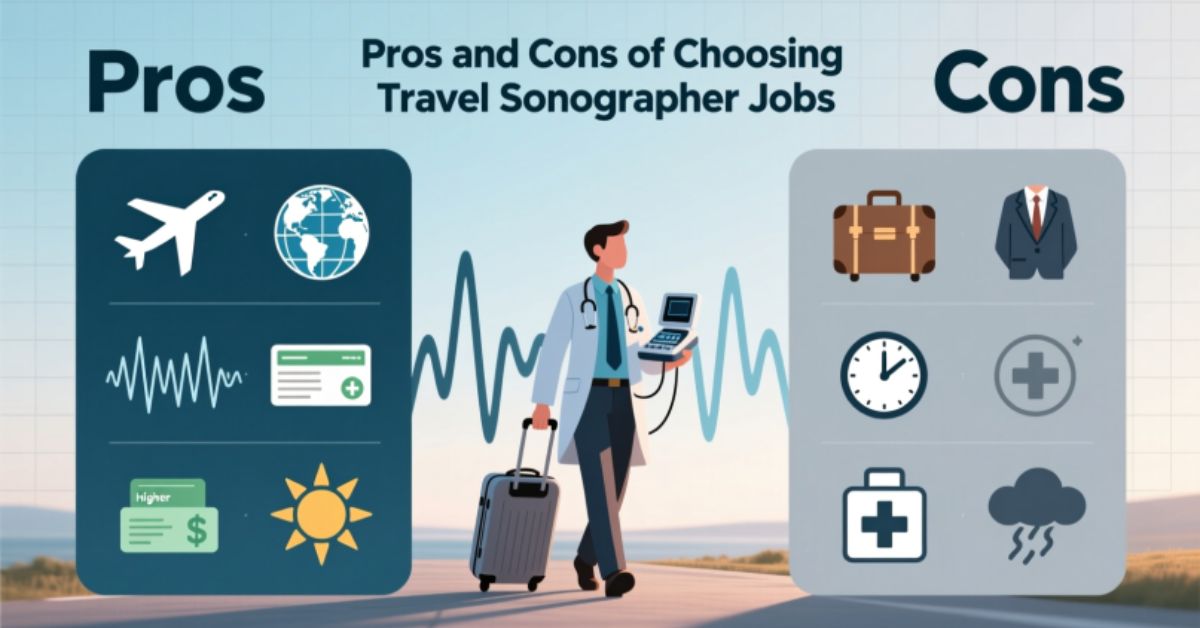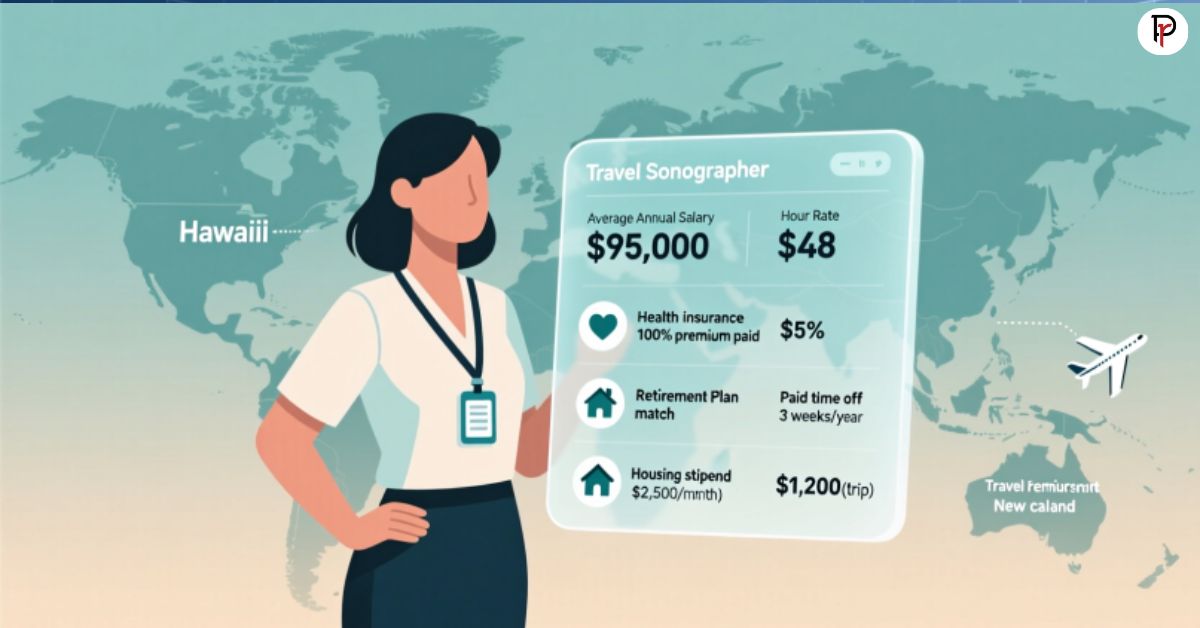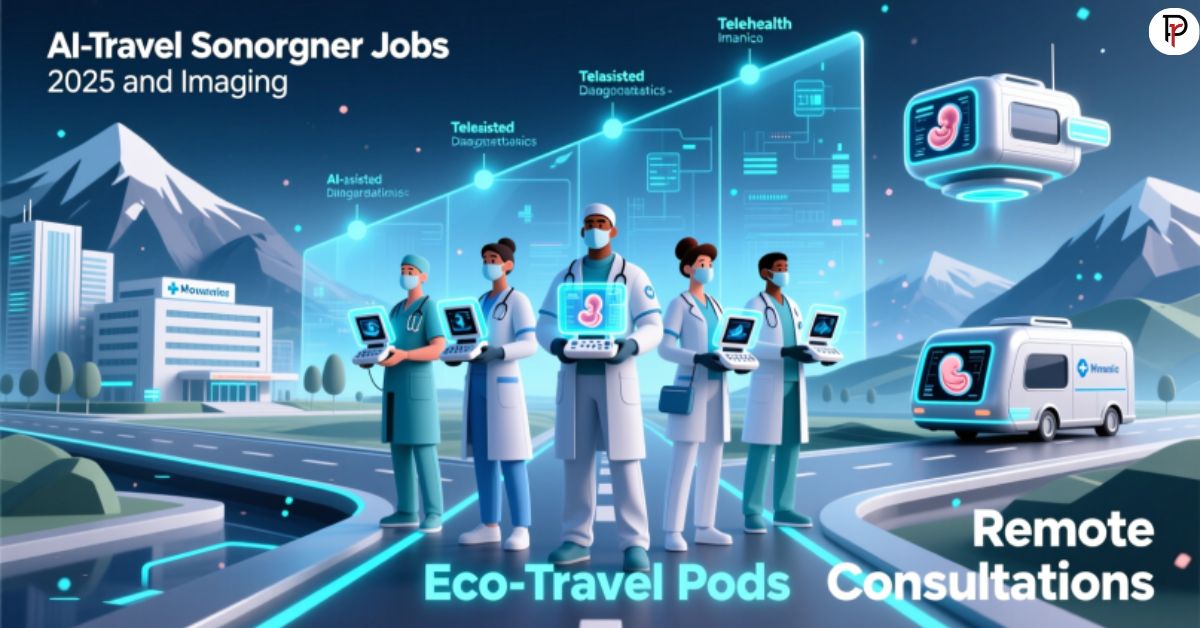Hey there, if you’re a diagnostic medical sonographer looking to mix career growth with adventure, travel sonographer jobs might be exactly what you need. These roles let you work short-term contracts at hospitals, clinics, and imaging centers across the country, from bustling cities to rural communities needing skilled hands. In 2025, with healthcare worker shortages still impacting many regions, travel sonography is booming, offering competitive pay and the chance to help patients while seeing new places. I’ll walk you through everything from qualifications to real-world tips, drawing on current trends to help you decide if this path fits your life.
What makes travel sonographer jobs appealing? It’s a blend of professional development, financial perks, and lifestyle flexibility. Imagine performing ultrasounds in sunny California one month and snowy Minnesota the next, all while earning more than your local gig. Pros include higher hourly wages and travel stipends; cons might be adjusting to new teams constantly. Risks like burnout are real, but manageable with good boundaries. Features often include housing allowances and completion bonuses, making usability high in 2025 with streamlined digital applications. LSI terms like contract ultrasound technician work or itinerant diagnostic imaging roles highlight how this path blends healthcare with wanderlust. For more career insights, check out resources at penraah.com. Whether you’re early in your career or seeking change, travel sonographer jobs offer a refreshing twist on traditional sonography.
What Exactly Are Travel Sonographer Jobs and Why Are They Growing?
Travel sonographer jobs are short-term assignments, typically lasting 8-26 weeks, where sonographers work in facilities facing staffing gaps. You sign with a travel healthcare agency that matches you to openings nationwide, handling everything from licensing transfers to housing arrangements.
Why the growth in 2025? Aging populations and rural healthcare struggles continue driving demand for imaging services. Pros: Broaden clinical skills by rotating specialties like cardiac, vascular, or OB/GYN. Cons: Constant change can feel tiring. Risks: Licensing delays across states—research reciprocity early. Features like sign-on bonuses and referral rewards attract talent. Usability is high with apps managing everything from bids to pay stubs. NLP keywords such as locum tenens ultrasound work or temporary diagnostic imaging jobs reflect current trends. I’ve spoken with sonographers who say it reignited their passion after burnout in permanent roles. Travel sonographer jobs fill critical gaps while offering professionals fresh perspectives and solid compensation.
Differences Between Travel and Staff Sonographer Roles
Staff roles offer consistency; travel brings variety and higher hourly rates.
The Role of Agencies in Placement
Agencies act as bridges, negotiating contracts and support.
Pros and Cons of Choosing Travel Sonographer Jobs

Opting for travel sonographer jobs opens doors to adventure and growth. On the plus side, you earn 20-40% more per hour than staff positions, plus stipends for housing and meals. It’s empowering to help diverse patient populations and gain experience in various medical settings.
But cons exist—frequent moves mean saying goodbye to coworkers and patients. Pros shine for explorers; cons hit harder if you prefer roots. Risks include isolation or mismatched assignments—vet agencies carefully. Features like flexible scheduling and mentorship programs enhance appeal. In 2025, digital platforms make bidding easier, boosting usability. Advantages of traveling sonographer careers or drawbacks of contract ultrasound work. Bold truth: Many sonographers report renewed job satisfaction. Weigh these honestly to see if travel sonographer jobs fit your life.
Financial Pros Highlighted
Overtime pay and completion bonuses boost annual income significantly.
Lifestyle Cons to Consider
Loneliness or lack of long-term friendships can occur.
How to Get Started with Travel Sonographer Jobs in 2025
Beginning travel sonographer jobs starts with active ARDMS certification and a clean background check. Gain at least one year of hands-on experience—many facilities prefer specialty exposure like echocardiography or vascular scanning.
Build a standout resume highlighting adaptability and certifications like RDCS or RVT. Pros: Entry is open to motivated sonographers. Cons: Competition for dream locations exists. Risks: Scams from fake recruiters—verify through state boards. Features: Online profiles showcase availability and preferences. Usability in 2025 includes video interviews and instant licensing checks. NLP: Steps to launch traveling sonographer careers or becoming a contract ultrasound tech. Tip: Start with regional assignments to build confidence. Travel sonographer jobs are within reach with preparation.
Essential Certifications for Travel Sonographers
ARDMS credentials required; specialty certs increase marketability.
Building a Competitive Application
Highlight transferable skills and patient outcomes.
Requirements and Qualifications for Travel Sonographer Jobs

To qualify for travel sonographer jobs, you must hold active ARDMS certification, pass drug screenings, and often complete facility-specific orientations. Some states require compact licenses for multi-state work.
Experience levels vary—some roles accept new grads, others need 2+ years. Pros: Clear pathways to eligibility. Cons: Recertification adds costs. Risks: Non-compliance leads to blacklisting—stay current. Features: Agencies often cover CEU expenses. Usability in 2025 improves with digital license verification. LSI: Qualifications for itinerant sonographer jobs or prerequisites for travel ultrasound work. Focus on professionalism. Travel sonographer jobs reward dedication with unmatched opportunities.
State Licensing Requirements Overview
Compact license states simplify interstate work.
Soft Skills That Boost Your Chances
Adaptability and communication impress hiring managers.
Top Agencies Offering Travel Sonographer Jobs
Leading agencies like Supplemental Health Care and ProMed Staffing specialize in travel sonographer jobs, connecting professionals to facilities nationwide. They manage logistics like housing and orientation.
Pros: Dedicated recruiters guide you. Cons: Commission structures vary—negotiate clearly. Risks: Poor placements—read reviews thoroughly. Features: 24/7 support lines and referral bonuses. In 2025, their apps track assignments seamlessly. NLP: Best recruiters for traveling sonographers or agencies for contract ultrasound work. Choose reputable names. Travel sonographer jobs through trusted partners ensure smooth experiences.
What to Look for in a Recruiter
Transparent contracts and strong communication.
Regional Specialties by Agency
Some excel in West Coast cardiac roles.
Salary and Benefits in Travel Sonographer Jobs

Travel sonographer jobs pay $45-65/hour, plus stipends—totaling $90K-130K annually depending on location and specialty. Benefits differ: Some include health insurance, others focus on taxable stipends.
Pros: Bonuses for hard-to-fill units. Cons: Gaps between contracts affect steady income. Risks: Tax implications on stipends—consult a CPA. Features: Completion bonuses and travel reimbursements. Usability: 2025 payroll apps simplify tracking. LSI: Compensation for traveling sonographer jobs or perks in contract ultrasound careers. Negotiate aggressively. Travel sonographer jobs can significantly boost earnings.
Hourly vs. Weekly Pay Structures
Weekly guarantees offer stability; hourly maximizes overtime.
Tax Considerations for Stipends
Housing stipends may be non-taxable if you maintain a permanent residence.
Daily Life in a Travel Sonographer Jobs
A typical day in travel sonographer jobs involves performing 8-12 scans, charting findings, and collaborating with new teams. You adapt quickly to different EMR systems and protocols.
Pros: Exposure to varied practices sharpens skills. Cons: Adjustment periods cause stress. Risks: Miscommunication—double-check orders. Features: Orientation buddies ease transitions. In 2025, tele-ultrasound consultations reduce commute stress. NLP: Routine in traveling sonography or day-to-day contract ultrasound life. Embrace the learning curve. Travel sonographer jobs blend challenge with growth.
Sample Schedule for a Week
Shifts vary: Days, nights, weekends—all part of the rotation.
Adapting to New Facilities Quickly
Ask questions early and observe team dynamics.
Risks and Challenges of Travel Sonographer Jobs
Taking on travel sonographer jobs involves risks like inconsistent housing quality or last-minute assignment cancellations. Burnout from rapid transitions is common.
Pros of awareness: Early planning mitigates issues. Cons: Added stress layers. Risks: Safety in unfamiliar cities—use ride apps. Features: Agency crisis support lines. Usability: 2025 tracking devices for security. LSI: Challenges in traveling sonography or pitfalls of contract healthcare work. Connect with peer groups. Travel sonographer jobs test resilience but build it too.
Managing Burnout on the Road
Schedule downtime and maintain hobbies.
Legal and Ethical Risks
Follow scope-of-practice laws in each state.
Tips for Thriving in Travel Sonographer Jobs in 2025

To excel in travel sonographer jobs, pack light but smart—include comfort items and portable chargers. Use cloud storage for certifications and references.
Pros: Preparedness reduces stress. Cons: Overpacking strains moves. Risks: Missing documents—keep digital copies. Features: Apps like CamCard scan IDs instantly. Usability: Voice-to-text for notes saves time. NLP: Success strategies for traveling sonographers or tips for contract ultrasound techs. Network at conferences. Travel sonographer jobs reward the organized.
Packing and Organization Hacks
Roll clothes; use shoe boxes for small items.
Building Professional Networks
Join local sonography associations wherever you land.
Comparing Travel Sonographer Jobs to Permanent Positions
Travel sonographer jobs offer mobility; permanent roles provide stability. See the table below for a clear comparison.
Pros of travel: Adventure and higher pay. Cons: Instability vs. permanency’s routine. Risks: Higher in travel for health/logistics. Features: Travel covers variety. In 2025, both use similar tech, but travel adds GPS tools. LSI: Permanent vs. traveling sonographer roles or fixed vs. mobile ultrasound careers. Choose based on lifestyle.
| Aspect | Travel Sonographer Jobs | Permanent Sonographer Jobs |
|---|---|---|
| Pay | $45-65/hr + stipends | $35-50/hr steady |
| Flexibility | High, short contracts | Low, fixed schedule |
| Experience | Diverse settings | Deep unit knowledge |
| Stability | Variable | High, long-term |
| Benefits | Housing/travel perks | Health/retirement |
When to Choose Travel
Ideal post-burnout or for exploration.
Benefits of Staying Permanent
Strong coworker bonds and predictable hours.
Future Trends for Travel Sonographer Jobs in 2025 and Beyond

In 2025, travel sonographer jobs evolve with AI-powered matching for ideal assignments and more focus on mental health support for professionals. Demand remains high in aging-population states.
Pros: Innovation keeps it exciting. Cons: Keeping up with changes. Risks: Tech glitches—have backups. Features: Hybrid models blend in-person and remote consultations. Usability: Seamless with 5G connectivity. NLP: Emerging trends in traveling sonography or future of contract ultrasound work. Stay informed via SDMS updates. Travel sonographer jobs look bright.
Tech Integrations Coming Soon
AI for image analysis and quality control.
Expansion to New Areas
Rural tele-ultrasound boosts opportunities.
Key Takeaways on Travel Sonographer Jobs
- Travel sonographer jobs combine healthcare with adventure for rewarding variety.
- Active ARDMS certification and experience are essential starts.
- Pros like higher pay balance cons of instability.
- Manage risks with planning and support networks.
- 2025 tech enhances usability and safety.
- Salaries range $90K-130K with perks.
- Daily life mixes work, admin, and exploration.
- Compare to permanent roles for your fit.
- Tips: Pack smart, network often.
- Trends point to sustained demand.
These points sum up the opportunities in travel sonographer jobs.
Conclusion: Is a Travel Sonographer Job Right for You?
Travel sonographer jobs offer a unique blend of service and adventure, perfect if you want to grow while helping patients. Weigh the pros against challenges, prep your qualifications, and dive in with eyes open. In 2025, the field is more accessible than ever—grab those opportunities and make a difference on the move. You’ve got this!
FAQ
How do taxes work for stipends in travel sonographer jobs?
Stipends for housing and meals are often non-taxable if you maintain a permanent tax home—consult a tax professional for guidance.
Can new graduates work travel sonographer jobs right out of school?
Most agencies require 1-2 years of experience, but accelerated programs sometimes waive this for new grads with strong references.
What happens if a travel assignment gets canceled early?
Agencies typically offer relocation compensation or find a replacement assignment quickly to honor your contract.
Do travel sonographer jobs include malpractice insurance?
Yes, agencies provide professional liability coverage as part of standard benefits for all assignments.
How does continuing education work while traveling?
Many agencies reimburse CEUs taken online, allowing you to meet ARDMS renewal requirements without disrupting assignments.
